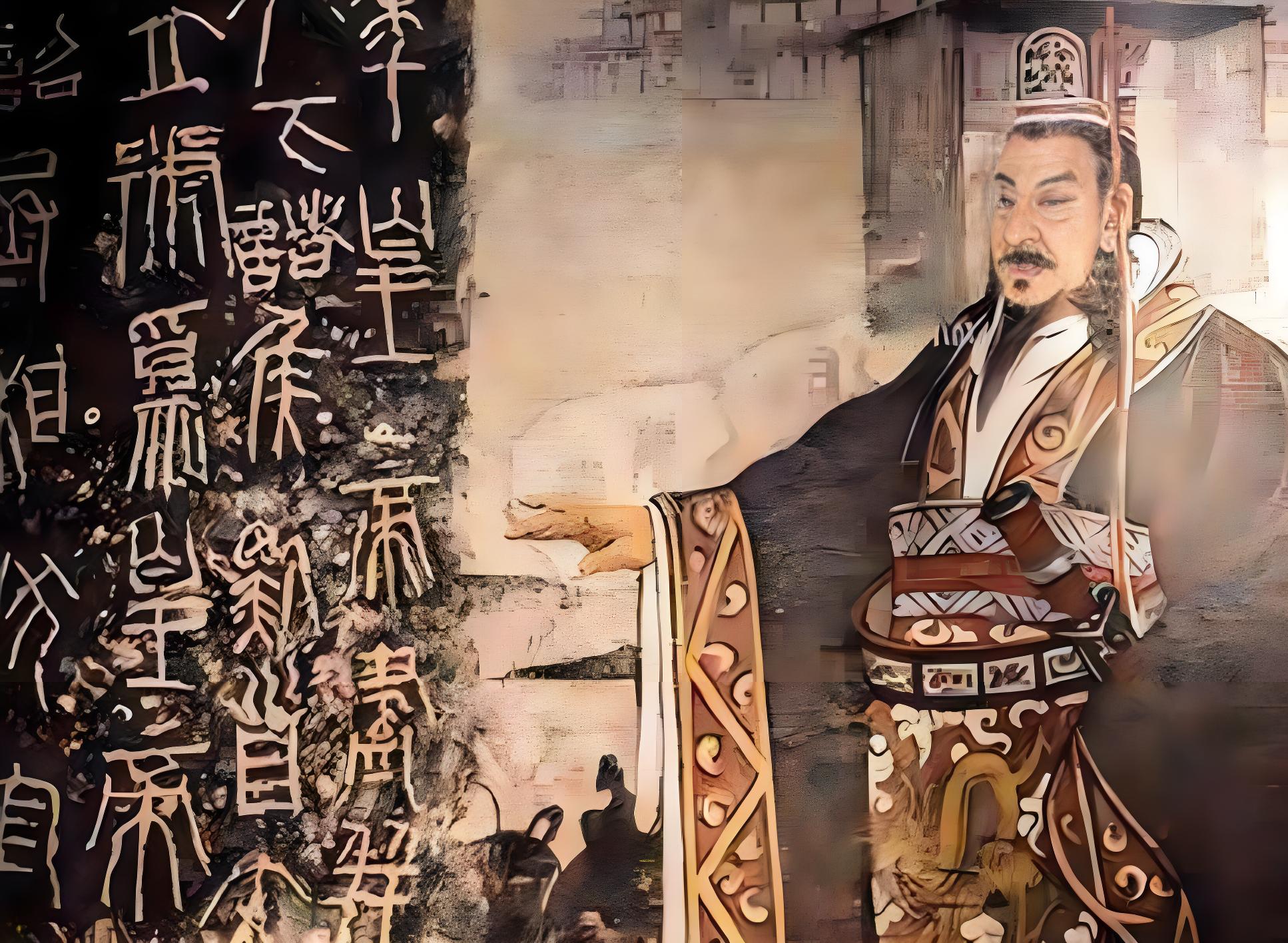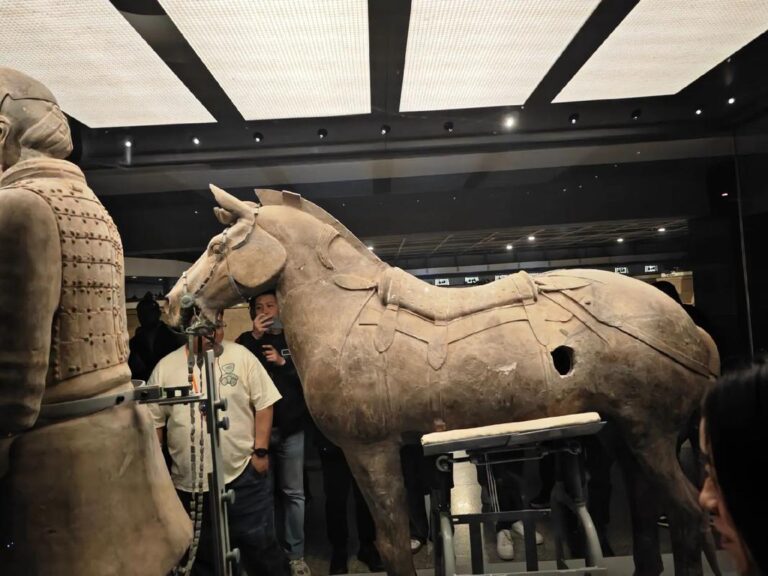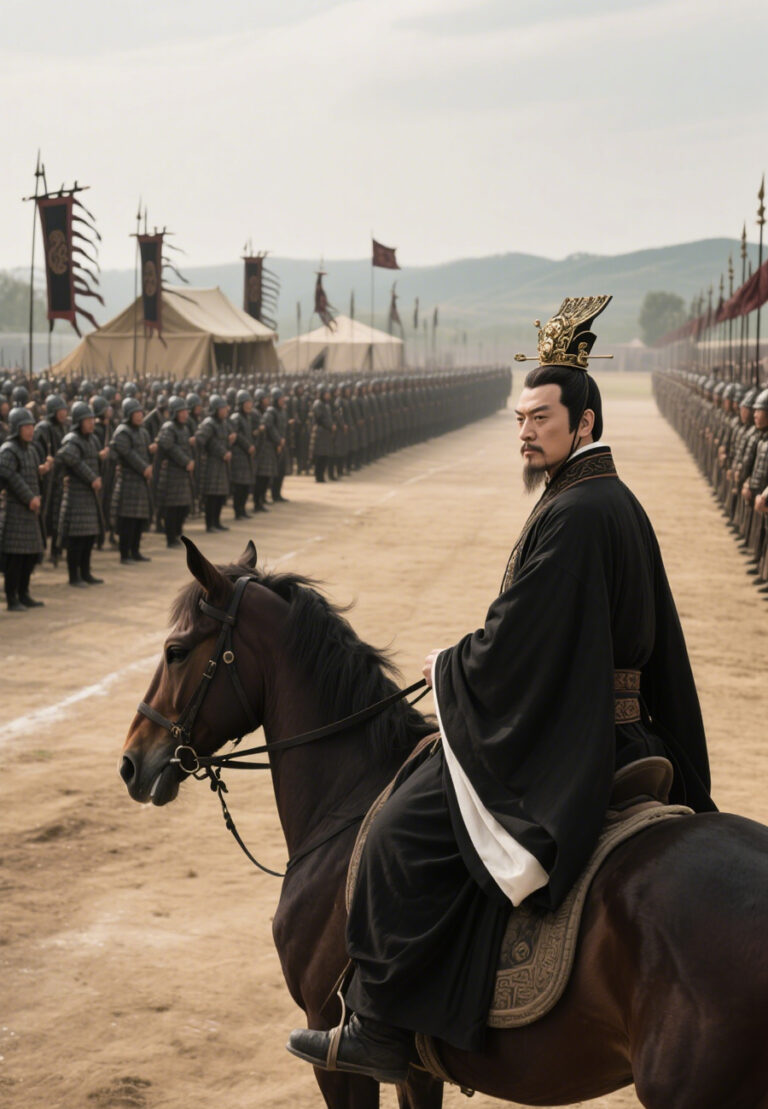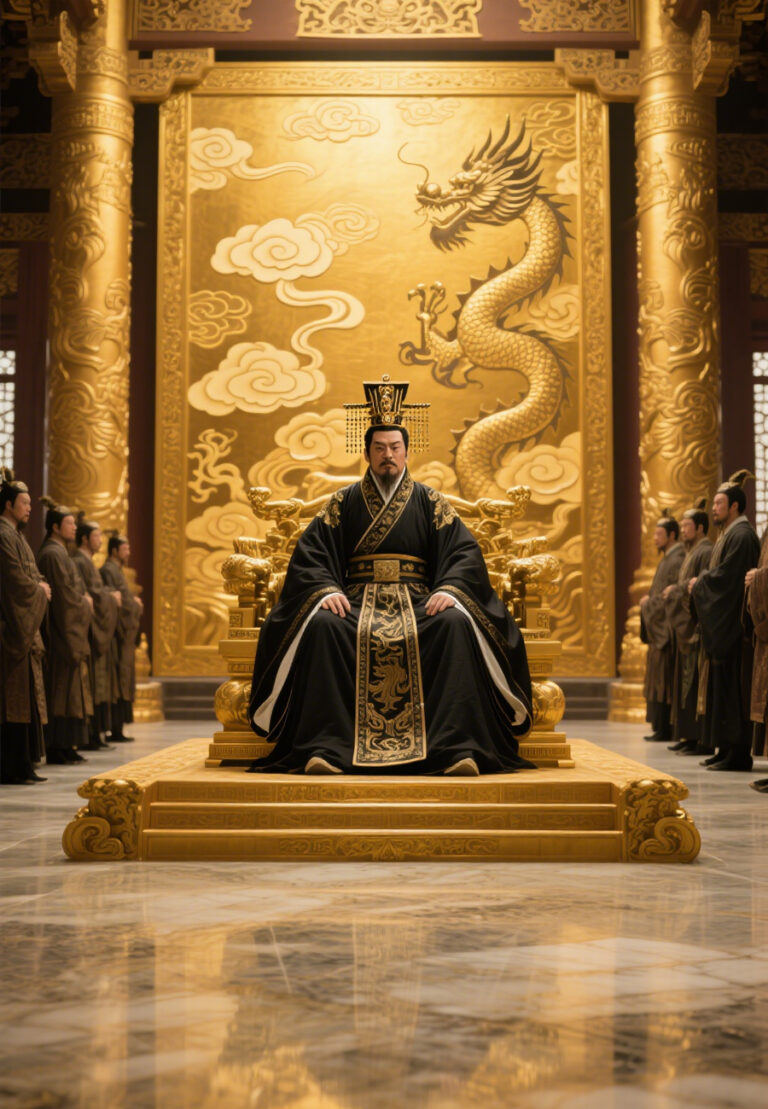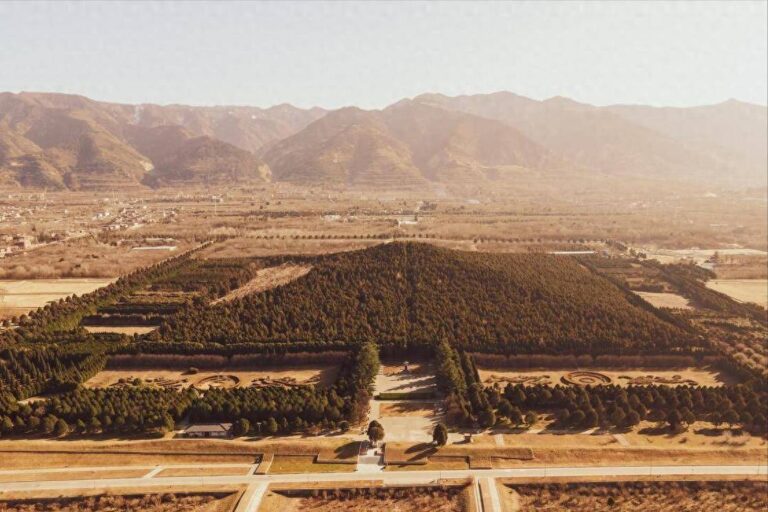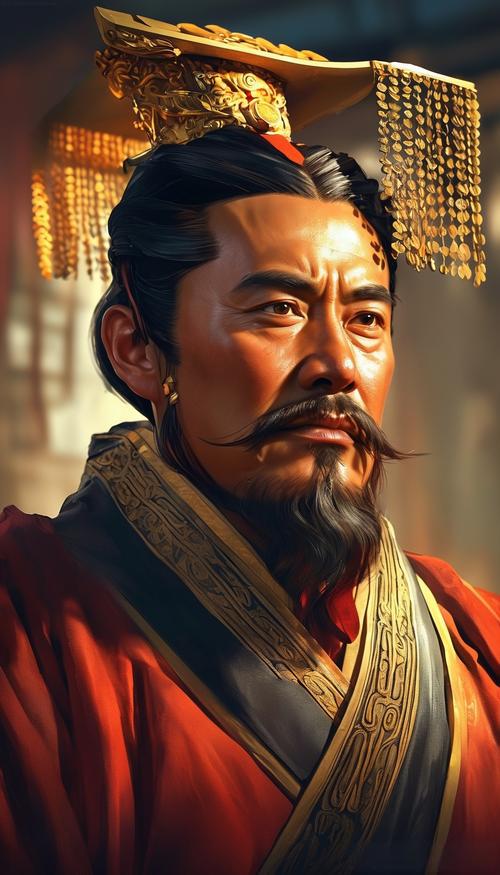What happened after Qin Shi Huang died?
What happened after the death of Qin Shi Huang? –Power, Betrayal and the Collapse of Empire
In 210 B.C., Qin Shi Huang, the first emperor in Chinese history, died in Shachu (present-day Guangzong, Hebei Province) during his fifth tour. The “Emperor of the Ages”, who unified the six kingdoms with an iron fist and created a centralized system of power, died in a series of bloody power struggles and social upheavals, which ultimately led to the collapse of the mighty Qin empire after only 14 years of existence. This history not only demonstrates the greed and cruelty of human nature, but also provides a profound lesson in governance for future generations.
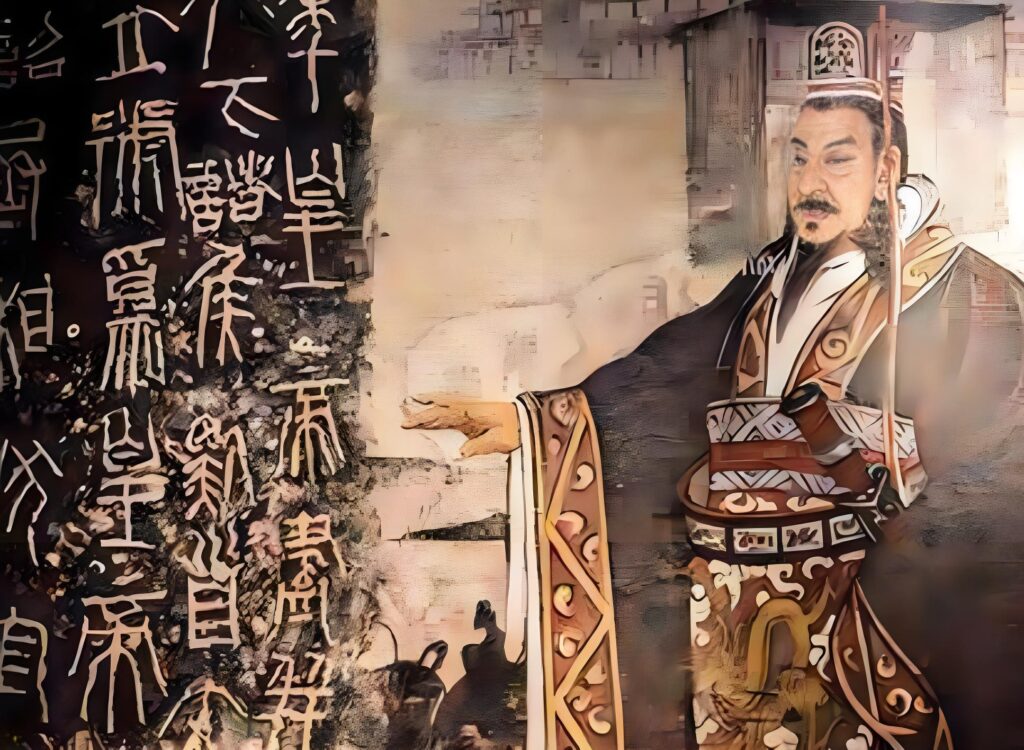
I. Power Vacuum and Conspiracy: Tampering with the Willing Edict and Hu Hai’s ascension to the throne
Before his death, Emperor Qin Shi Huang wanted to pass on the throne to his eldest son, Fusu, who dictated the willed edict: “to be buried in Xianyang with the funeral party,” i.e., to let Fusu go back to Xianyang to preside over the funeral and take over the throne. However, this decision was tampered with by the eunuch Zhao Gao and the prime minister Li Si. Zhao Gao, fearing that Fu Su would lose his power if he succeeded to the throne by relying on the Mengtian family, turned to support Hu Hai, the 18th son of Hu, who was a mediocre ruler. He threatened Li Si and lied to him, saying that “if Fusu succeeded to the throne, he would reuse Mengtian, and you would be sidelined”. Eventually, the three of them conspired to forge an imperial decree, forcing Fusu and Mengtian to commit suicide, and Hu Hai ascended to the throne as the second Qin Emperor.
This act of usurpation directly shook the legitimacy of the Qin dynasty. Hu Hai lacked the ability to rule the country and indulged in pleasures all the time, and the government was controlled by Zhao Gao. Zhao Gao even tested the loyalty of his ministers by “calling a deer a horse” and eliminated dissidents, which completely paralyzed the decision-making system of the court.
Second, bloody cleansing: Hu Hai’s massacre of his siblings
Hu Hai knew that he was not in the right position, in order to eliminate the threat, he was encouraged by Zhao Gao to launch a large-scale massacre of the children of Qin Shi Huang. According to records, Emperor Qin Shi Huang had 33 children, 23 sons and 10 daughters, all of whom were killed except Hu Hai.
Execution in batches: Hu Hai first dismembered 6 of his elder brothers in Du County under the pretext of “burying the first emperor”, and then executed 12 of his brothers in Xianyang, with their bodies discarded at random.
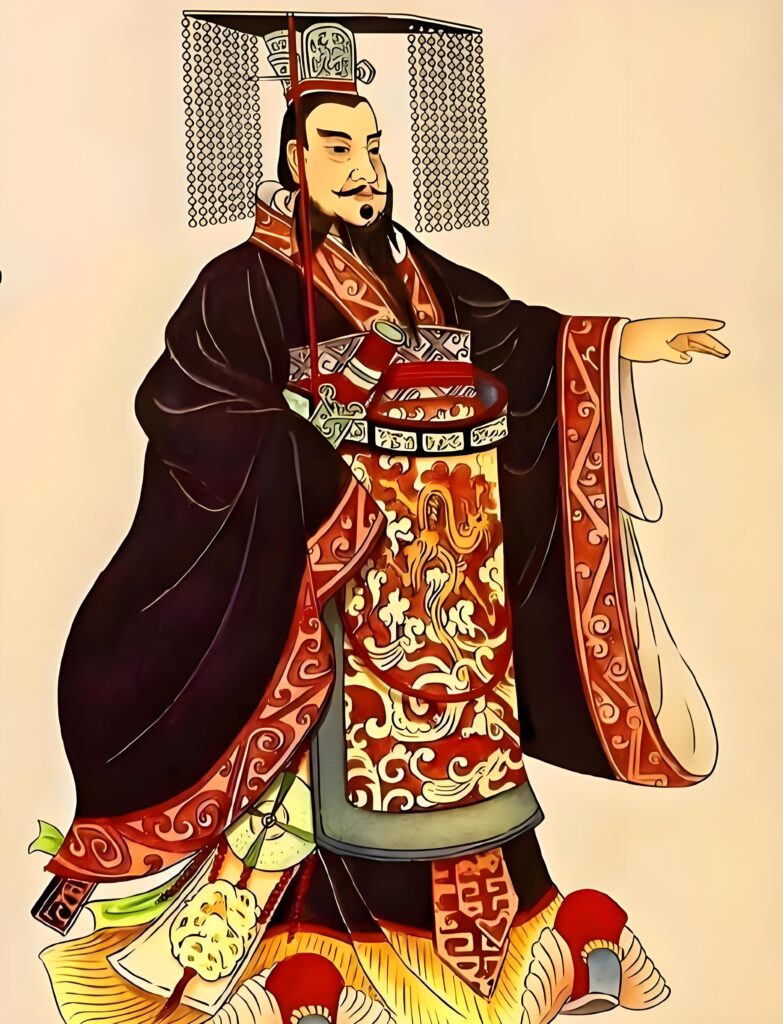
Forced to kill themselves: Duke Zhilu and three others were forced to kill themselves even though they had no faults to be found because of their good behavior; Duke Gao asked for martyrdom in order to protect his family, and was eventually mutilated.
Princesses killed: 10 princesses were killed in Du County, the bones were scattered, and the royal ornaments and broken human bones unearthed in the burial pits proved this tragedy.
The massacre was not only the result of a power struggle, but also exposed the fragility of the Qin system – when the law was reduced to a tool for personal ambition, even the royal bloodline could not protect itself.
III. Martyrdom and Tombs: The Brutal Truth of Burial of the Living
Emperor Qin Shi Huang’s obsession with the world behind him turned countless lives into martyrdom:
1. Martyrdom in the Harem: Unchild-bearing concubines were martyred en masse. Archaeologists found 99 burial pits near the Qin Mausoleum. The bones of the corpses were messy and mutilated, mostly young women, and some of them were dismembered and filled into the tomb passage, confirming the barbaric burial rite of “the dead are not allowed to enter the tomb room”.
2. Craftsmen extermination: in order to prevent the leakage of the secrets of the mausoleum, the craftsmen involved in the construction of the tomb of Mount Li were closed in the tomb buried alive.
3. Extravagant underground palace: According to the Records of the Grand Historian, the mausoleum was covered with mercury to simulate a river and was full of organs. However, the body of Emperor Qin Shi Huang had long been rotting due to the long-distance transportation in the summer, and Li Si and others had to cover up the stench of the body with stinking fish.
These atrocities intensified social conflicts. Only the tomb of Mount Li and the A-fang Palace were subjected to 700,000 laborers, and the folk song “Don’t raise a boy, don’t raise a girl” (Don’t raise a boy, feed a girl with meat.) was circulated among the people.
Civil unrest and collapse: from Chen Sheng’s uprising to Liu Bang’s entry into Xianyang
Hu Hai’s tyrannical rule made the Qin dynasty lose its people’s heart quickly:
Strict laws: late arrival, private discussion of the government were punishable by death, and even the delay of garrisoning in the rain was punishable by beheading, which triggered Chen Sheng’s and Wu Guang’s revolt (209 B.C.E.) directly.
Military blunders: 300,000 elite troops were stationed in the north to defend against Xiong Nu, and 500,000 troops were deployed to the south to conquer Baiyue, leaving the Central Plains empty of troops. Zhang Han led the prisoners to form a temporary army and eventually lost to Xiang Yu.
Restoration of the Six Kingdoms: Xiang Yu annihilated the main force of the Qin army in the Battle of Julu. Liu Bang took the opportunity to advance westward and attacked Xianyang in 207 BC, and Prince Ying of Qin surrendered, resulting in the fall of the Qin Dynasty.
Ironically, Qin Shi Huang collected all the weapons of the world to prevent rebellion, but in the end, it was the peasants who “chopped wood for soldiers and unveiled poles for flags” who overthrew his empire.
V. Historical revelation: the game of power, system and human nature
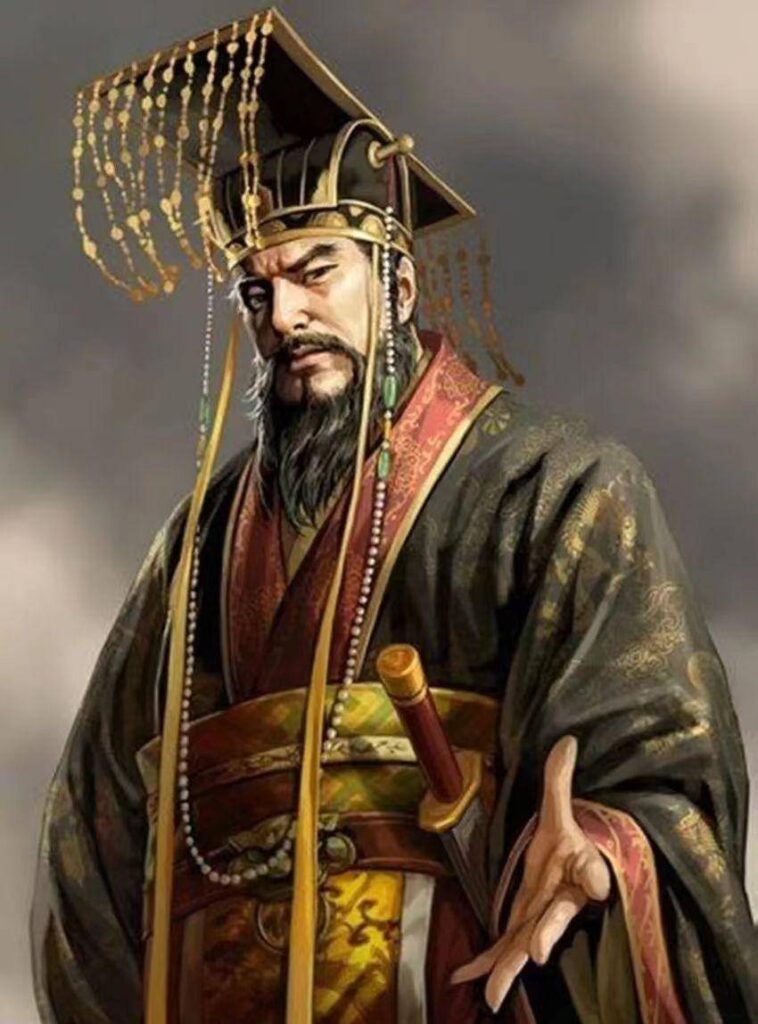
The collapse of the Qin Dynasty was not accidental, but the result of the interweaving of multiple factors:
1. Institutional defects: over-reliance on the harsh laws of the Legalists, neglecting the people’s livelihood and recuperation, as commented by Jia Yi, “benevolence and righteousness are not applied, and the situation of attack and defense is different.
2. Succession crisis: the lack of a clear mechanism for the transfer of power led to the usurpation of power by Zhao Gao and Li Si. 3.
3. Faulty leadership: If Fusu had succeeded to the throne and implemented a benevolent government, the crisis could have been delayed; Hu Hai’s brutality accelerated the demise.
Compared to the Roman Empire of the same period, the lessons of the Qin Dynasty emphasize the truth that even the strongest military and engineering will eventually disintegrate if it loses the hearts of the people and the resilience of the system. As Sima Qian said, “The King of Qin swept away the Six Harmonies! The king of Qin swept away the Six Hordes, and the tiger looked down on him. He wielded his sword to break the floating clouds, and all the vassals came to the west” — but the wheels of history finally crushed the dictator’s dream of immortality.
Conclusion
The three years following the death of Qin Shi Huang were one of the bloodiest periods of power change in ancient Chinese history. From the conspiracy in the sand dunes to the fall of Xianyang, this period of history is not only a family tragedy, but also reveals the importance of supervision and checks and balances of power. For modern people, it reminds us that true “immortality” does not lie in the mercury and rivers in the tombs, but in the construction of a system that respects human nature and responds to people’s wishes.

